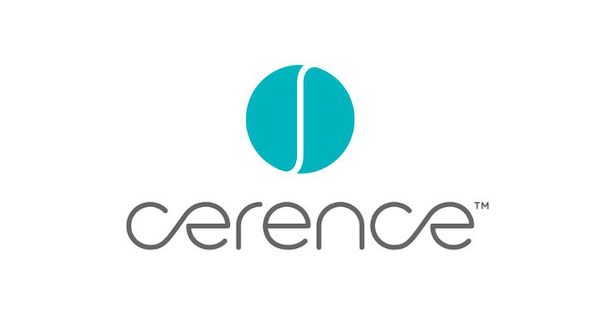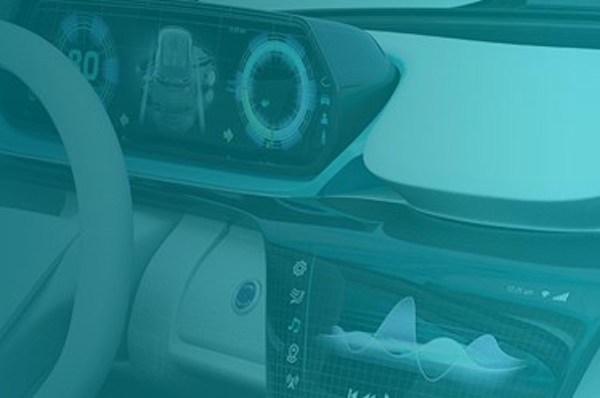A Voice Giant is Born. Cerence Now Houses All of Nuance’s Automotive Solutions and Customers.

Yesterday, Cerence formally became a separate company as a spin-off from publicly traded Nuance. Followers of the voice industry know of Nuance as the company that created, through an aggressive acquisition strategy, the largest voice recognition technology portfolio and customer base in the industry. A big part of the company’s success over two decades came in serving the world’s leading automakers. Nuance executives decided last year to spin-off the automotive group as a separate company focused solely on the industry and that process culminated with Cerence trading as an independent company today on the NASDAQ with the ticker symbol CRNC.
Cerence closed its first official day of trading on October 2nd at $15.35 per share down 13.5% from the $17.75 opening price. For comparison, the S&P 500 was down by 2.2% for the day. A Nuance “fact-sheet” about the spin-off reports the company’s forecasted annual revenue for FY2019 should fall between $308-$310 million and other reports suggest the quarter ending June 30, 2019, booked revenue of $77.6 million with $1.8 million in net profit.
A Global AI Footprint

A media release announcing the spin-out indicated that the new company employs about 1,300 professionals including 700 they designate as serving in research and development. Cerence is also not limited to voice in its offering and has a truly global technology stack behind its products. According to the official media release:
“Bringing together voice, touch, gesture, emotion, and gaze innovations, it creates deeper connections between drivers, their cars and the digital world around them. Cerence currently powers A.I. in more than 280 million cars on the road globally across more than 70 languages and for nearly every major automaker in the world, including Audi, BMW, Daimler, Ford, Geely, GM, SAIC, Toyota, and many more.”
The new company also has 21 offices worldwide, works with 60 auto brands and in the first half of 2019 had technology included in one of every two cars shipped globally. In an interview for the Voicebot Podcast earlier this year, Rashmi Rao of Harman International suggested that global footprint was an important strength that Amazon and Google would find difficult to match. Automakers have a lot of localization complexity to deal with ranging from regulation to languages and accents. The popular consumer voice assistants can’t today match the breadth of language and localization support that Cerence provides. This means Cerence can be a true global partner as opposed to automakers needing to have different solutions for different countries.
Fierce Competition to Become the Voice of the Car
The car has become the latest battleground for voice assistant proliferation with Amazon, Google, and SoundHound looking to gain position for their assistants in as many cars as possible. These happen to be cars where Cerence typically already has a footprint. This heightened competition was one reason why the spin-off was deemed necessary. Sanjay Dhawan, the new CEO of Cerence, commented in the company’s official media release:
“The ability to focus solely on the automotive market will be hugely beneficial in achieving the next level of technological innovation in this space. With our new, hyper-focused vision, we’ll not only be able to meet the most ambitious consumer expectations but also challenge the industry as a whole to redefine the immersive driver experience.”
With Nuance also focused on customer contact centers, product integrations, and a variety of other services, it was clearly going to be difficult to give the required management attention as competition rises in the auto segment. This is particularly important as Cerence navigates a new model for automakers implementing voice solutions. In the past, Nuance was typically the only voice solution in the car. Increasingly, legacy Nuance Automotive technology, now transferred to Cerence, is operating alongside a SoundHound or Alexa implementation providing different or even overlapping services for drivers. Audi, BMW, and Mercedes are examples where Cerence now shares the microphone with a competitor.
Amazon’s recent announcement with General Motors creates a different challenge still across a number of its auto brands. In that implementation, drivers will select either Alexa or the embedded GM voice solution which is provided by Cerence. There will only be a single voice solution live at any given time so losing out in that selection can eliminate the car entirely as a solution endpoint.
Granted, Cerence has other advantages. It’s solutions go beyond voice to manual input mechanisms, facial recognition, and other features that interest automakers and are not provided by the popular consumer voice assistants. The singular focus on automakers should enable Cerence to further refine its technology stack to meet their needs in ways that its newer competitors are unlikely to supply in the near-term.
Follow @bretkinsella Follow @voicebotai
Sanjay Dhawan CEO of Cerence Talks About Voice and AI in the Car – Voicebot Podcast Ep 120
GM to Provide the First Full Alexa Auto Implementation and It’s Different Than What Came Before








